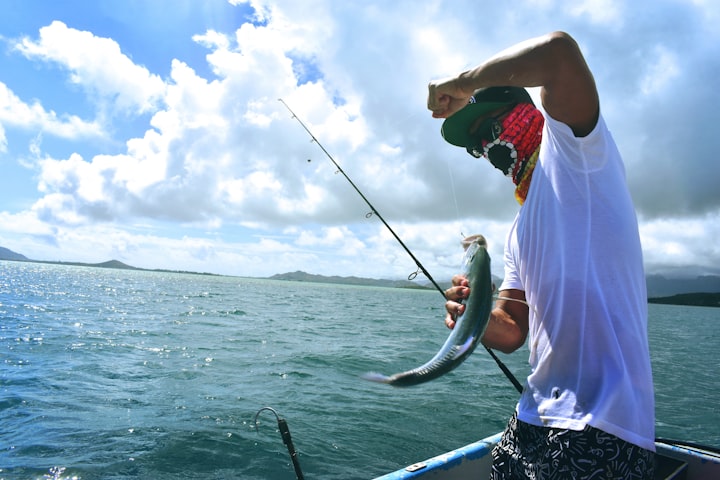Considerations About Bass Fishing Tackle
Fishing Tackle

Considerations About Bass Fishing Tackle
Introduction
You can find plenty of bass fishing tips and all kinds of information about largemouth bass, but in reality there’s just as much misinformation as fact out there. The late Al Houser, former director of the Oklahoma Fisheries Research Lab, made a comment that’s stuck in my head for 30 years. “The problem isn’t that anglers are ignorant,” he lamented, “it’s that they know so many things that just ain’t so.”
Every angler group has its widely held fallacies, perhaps none more than bass anglers. That’s perhaps surprising, given the volume of research directed at largemouth bass. Moreover, superbly skilled professional anglers often offer commentary on fishing and fishery management topics. Yet despite their talents and big winnings, many pro anglers are as guilty as anyone else of clinging to myths. Here’s a selection of firmly held beliefs that just ain’t so.
Largemouth bass strike lures jigged below a hole in the ice and eat large suckers and shiners set on tip-ups. In northeastern states, many of the biggest bass caught each year come through the ice.
Few North Country anglers target bass on frozen lakes, and that may be a good thing from a conservation standpoint. According to Roger Hugill, Minnesota DNR fishery biologist, a contingent of ice anglers sought to block catch-and-release regulations on a local lake. The reason, they argued, was that winter was the best time to catch the bass they liked to bake, those juicy five-pounders!
Physiological models suggest that at 40 degrees bass need consume only about one third as much food to maintain nutrition as they do at 70 degrees. Prey fish abundance is lowest in winter as well. But bass still eat.
In some systems, particularly rivers, bass tend to be sedentary during winter mostly because critical habitat is limited at that time. In lakes and reservoirs, however, underwater cameras show bass cruising along shallow and deep, often approaching the camera for a better look.
Myth #2: Bass Strike Red Hooks Because They Resemble Blood
Manufacturers have rushed to capitalize on this myth by offering lures with red hooks, red sinkers and blades, red line, even red reel spools. I’ve heard pros state in seminars that red hooks or a red highlight can attract extra bites by simulating the blood of a baitfish, gills, or perhaps a crawfish.
In a final experiment, the scientists applied herbicide directly on nesting bass and water onto others, as a control. Bass didn’t abandon nests, and reproduction in treated areas was similar to that in untreated ones.
Vegetation removal should be viewed as a last resort by lake managers, but careful treatments in limited areas should not harm bass fisheries.
Myth #8: Big Baits Catch Big Bass
This myth isn’t a complete fallacy. You can increase the average size of bass caught by using larger lures. But there’s far more to the relationship. Largemouth bass are an appropriately named fish. Endowed with a capacious maw, they eat anything they can catch and engulf—bats, rats, snakes, turtles, clams, birds, and amphibians, plus all sorts of invertebrates and fish.
Scientists have calculated the sizes of prey that bass consume. For narrow-bodied, soft-finned prey like shad or trout, bass may eat items up to half their own length. Wide-bodied, finny prey are selected at smaller sizes.
According to this formula, a thin, six-inch baitfish is fair game for a keeper-sized bass. And a 24-inch lunker shouldn’t shy from a foot-long prey-fish or a swimbait of similar dimensions. So, if you heave an eight-inch bait weighing a couple ounces, lunkers aren’t guaranteed, but don’t be surprised by the 16-inch bass attacking them.
The key to catching big bass with big baits is placing them in a vulnerable position where big bass live and hunt. Long, main-lake points, interfaces of deep water and offshore vertical structure, and deep weedlines are a few examples.
Researchers at the University of Arizona, curious about bass found choking on tilapia, conducted experiments to test bass choices. Adult bass were offered green sunfish, redear sunfish, and tilapia with body depths around and beyond the maximum size vulnerable to attack, according to calculations. Bass pursued and attacked prey larger than predicted, often choking on them. This result helps explain why at times miniature bass attack topwater luress, worms, and floating minnowbaits almost their own length.
At the other extreme, adult bass eat items as small as nearly microscopic water fleas (Daphnia), even subsisting on them for months when larger prey are scarce. Field Editor Ned Kehde is a finesse tactician, often found on Kansas’ hard-fished public impoundments wielding a 1/16- or even 1/32-ounce jighead with a 2 1⁄2-inch portion of a Strike King Zero. He likes action and often tallies dozens of bass in a short outing. But he regularly accounts for bass from three to nearly six pounds on these tiny offerings.
I hear bass pros rue the fact that they spent several hours trying to tempt a bedding lunker to bite, in the end failing and returning to weigh-in without a limit. In-Fisherman Editor In Chief Doug Stange once spent the better part of an afternoon with Florida guide Gene Holbrook trying to catch a big bass Holbrook had found after three days of searching. The lunker nipped baits, temporarily abandoned the nest, and frustrated them for hours, until a change of lures finally turned the trick on the 11-pounder.
Sight-fishing is an art, and skilled anglers can read the behavior of a particular bass and determine the likelihood of its capture. It takes years of practice, plus powers of observation, patience, and gamesmanship to do it well. On the other hand, some bass, particularly in lightly fished waters, may swim off a bed to eat nearly any bait tossed their way. So, when it comes to sight-fishing, if you don’t like it, then don’t do it.
Florida bass evolved in the central and southern part of that state and are adapted to conditions there. Outside this native range, cool water (below about 50 degrees for extended periods) limits their spawning, slows growth below that of native bass, and causes high mortality.
Since Florida bass frequently spawn with native fish, genetic mixing in subsequent generations is detrimental to the fitness of the natural population. Geneticists caution against introducing non-native stocks of largemouth bass and other species without extensive review of threats.
Bass myths often contain a kernel of truth. But when extrapolated to the larger bass-fishing scene, these adages restrict the free thinking that’s important to successful fishing.
In most cases, brush and other attractors concentrate bass but do little to enhance reproduction, lake-wide biomass, or growth. As a result, some fishery managers are reluctant to encourage their use, feeling that bass exploitation may rise if catch-and-release rates are low. Attractors can improve habitat by increasing the surface area available for invertebrates that feed small fish, but effects are local, not population-wide.
Big Bass Live in Deep Water
Big bass live where living conditions and prey availability support their bulk. That can be shallow, deep, or in between, depending on available habitat and prey type. In northern lakes, many of the biggest bass of summer are caught underneath boat docks in a couple of feet of water, or within lily-pad beds of similar depth.
Tracking studies have shown that some big bass hold on deep structure during the day but move into the 10-foot zone to feed after dark. In deep, clear lakes, lunkers may hold in open water, but they’re often suspended at levels where baitfish are most available.
Bass Seek Crayfish in Spring for Nutrition Benefits
Crayfish are a favorite bass food wherever they’re found, and in some cases spring consumption exceeds that of summer. Crayfish are rather poor food, however, from the standpoint of nutrition. They require substantial handling time, both to subdue the clawed critter and to extract the edible portion from its chitinous shell, which amounts to about a third of its total mass. Low fat content and caloric value also make craws less nutritious than most fish. But they’re easy to find and catch, particularly in spring when weed growth is thin. In summer, craws find shelter in dense weed beds that shield them from bass predation.





Comments
There are no comments for this story
Be the first to respond and start the conversation.